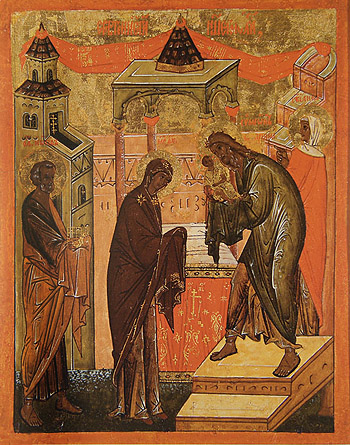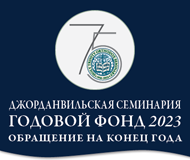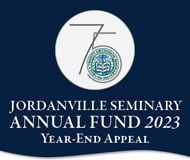News

THE MEETING OF OUR LORD GOD AND SAVIOR JESUS CHRIST
14 February 2011
The event of the meeting, in other words the meeting of the Old Testament piety with the holiness of Christ, the Church remembers every evening, “at the setting of the sun”, repeating the words of St. Symeon the Receiver of God: “Now lettest Thou Thy servant depart in peace, Oh Master, according to Thy word, for mine eyes have seen Thy salvation…” (St. Luke 2:28-32).
“Sanctify unto Me all the firstborn, whatsoever openeth the womb among the children of Israel, both of man and of beast,” was commanded by the Lord through the prophet Moses. “and all the firstborn of man among thy children shalt thou redeem” (Exodus 13:2, 13). When the service before the tabernacle of the covenant was given to the tribe of Levi, in other words to the Levites, a special redemption was set for the firstborn (Leviticus 12:6-8).
Thus, the Redeemer of the entire race of men was brought into the Jerusalem temple for redemption, while the More Honorable than the Cherubim, His Most Pure Mother had to undergo the ancient custom of the cleansing of the one who gave birth, who for the duration of the first forty days after the birth of a male child was considered unclean: in these days she was forbidden from touching holy objects, climbing unto the Temple Mount and taking part in the public worship (the unclean days of those, who gave birth to infant girls, altogether lasted for sixty six days (Leviticus 12:2-5). So it turns out that the Meeting is also, in a way, a Feast of the Lord’s humility.
According to ancient tradition, repeated in the works of Ss. Gregory of Nyssa, Cyril of Alexandria, and Andrew of Crete, the high priest (believed to be St. Zacharaiah – father of St. John the Baptist) by grace, contrary to the old law, led the Theotokos with the Infant from the place appointed to unclean women to the place where only the virgins stood, leaving without heed the rebukes of the scribes and Pharisees.
“But when the fulness of time was come, God sent forth His Son, made of woman, made under the law, to redeem them that were under the law,” writes of this the Apostle Paul (Galatians 4:4-5). “And when they had performed all things according to the law of the Lord, they returned into Galilee, to their own city Nazareth” (St. Luke 2:39).
Corresponding with this indication of the Evangelist Luke, who made a special effort to follow the chronological continuity in his account of the Good News, one can admit that the Holy Family fled into Egypt not directly from Bethlehem, but from Nazareth, having spent a short time there. In reality, the events of the gospel history – prior to the flight into Egypt – look this way: Nativity in Bethlehem of Judea; Circumcision of the Lord on the eighth day (in the same place); visit to the Jerusalem temple on the fortieth day (Meeting); return to Bethlehem and stay there until the arrival of the magi (?); departure for Nazareth, and from there into Egypt.
Wolfgang Pax in his detailed illustrated guide to the Holy Places of Palestine “In the steps of Jesus” notes, that, “supposedly Joseph and Mary with the infant moved to a small stone building; we don’t know whether it was built by the betrothed himself (he was a builder because of his occupation), or it belonged to some of his relatives. Now, nothing is left of it” (I cite the 1970 edition published in English).
Traditions about some home of the Holy Family in Bethlehem, more specifically in its immediate surroundings, to name it, in Beit Jala, are kept to this day among the Christians of Palestine.
Yet, according to the Lives of the Saints, the Theotokos during the forty days lived in the same cave, where the Savior was born. There is also a tradition to relate the arrival of the magi to the very first days after the Nativity: that is why it is said that the cleansing sacrifice of the Ever-Virgin – two doves (St. Luke 2:24) – was so small, because from the gold, brought as a gift by the magi, she left herself the smallest part, having given the rest away to the poor. Let us not forget, at the same time, that king Herod “sent forth, and slew all the children that were in Bethlehem, and in all the coasts thereof, from two years old and under” (St. Matthew 2:16), but the Lord was not among them: notified by the Angel, the Holy Family left the city. How did that happen? It turns out that, by the will of God, the murderers missed Christ: Joseph and Mary with the Divine Infant were already in Jerusalem, when Herod’s special forces entered Bethlehem…
“…the Holy Spirit was upon him,” says the Gospel about the elder Symeon, who came out to meet Christ (St. Luke 2:25). “Like the other old testament faithful, Symeon prepared to die with the faith in the fulfillment of the promises of God, but the Holy Spirit revealed to him that his was a much better lot” (Archbishop Nikodim. Soul-benefitting Reading, part 1,. 1861). Let us recall that this better lot was the punishment for unbelief: according to tradition, Symeon, who lived to the most profound old age, doubted the truth of Isaiah’s prophecy about the Virgin, Who shall give birth to a Son (Isaiah 7:14). As one of the creators of the Septuagint (“the translation of the seventy”), preparing the Greek text of the Bible for the king Ptolemeus Philadelphus, the young zealous scribe Symeon already wanted to change the unusual words, which he had to translate into Greek, but the Angel stayed his hand, having cried: “Believe in what is written! You shall see the fulfillment of these words and shall not die until you see their fulfillment.”
The feast of the Meeting, according to the rubrics, is considered to be one of the Theotokos, and is even sometimes called the Meeting of the Most Holy Theotokos; however, at the same time, some of the details of the service of the Meeting are the same as for the feasts of the Lord. This “dual nature of the feast, the joy of the Meeting and the sorrow of the Passion” (Monk Gregory Kroug, Thoughts about the Icon, 1969) is reflected in the prophecy of the holy elder Symeon, addressed to the Infant and to His Mother, and to the entire created world, which is “broken upon Christ,” is divided in two; is cut asunder by the same weapon (specifically – by the sword), that – according to the words of Symeon the Receiver of God – will pierce the soul of the Mother of God, in order that “the thoughts of the many hearts” may be revealed (St. Luke 2:35). Let us also note, that this is the last time until the very crucifixion, when that of Mary and that of Jesus is tied into one in the historical narrative of the Gospel, when the Mother is still trying to protect Her Son, to hold Him with her hands. Therefore, the Meeting contains within itself the Gospel of the Passion: on the icon of the feast “the Mother of God as though carries the Savior, but the Savior is no longer in her hands, He is held by Symeon the Receiver of God, and the throne, depicted in the very center of the icon, between the Mother of God and Christ in the hands of Symeon, creates as though the impassable wall” (monk Gregory Kroug).
Nothing can be changed. The redemptive sacrifice must be offered.
Child, what didst Thou do with us? – Mary will quietly ask her Son, Whom She looked for a long time in the noisy porticos of the Jerusalem temple. – Behold, Thy father and I looked for Thee with great sorrow.
Why did you need to look for Me? – the twelve year old Child will answer. – Or, did ye not know that I must be about My Father’s business? (St. Luke 2:48-49)
The feast of the Meeting in its essence sets boundaries. Our ancestors very well recognized this characteristic, saying: “for the Meeting the sun turns for the summer, and the winter turns for the frost.”






